


|
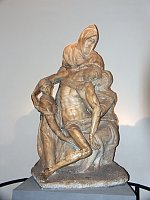
|
This sculpture is also called the Pietà Bandini, named after Francesco Bandini who acquired the work after Michelangelo had attacked it in a rage. It is more than the traditional Pietà (or sculpture with mourning figures) since it also includes elements of the deposition or burial. |
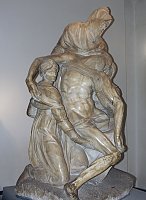
|
Frontal viewEmphasis is on the downward sliding motion of Christ's body, underscored by the long left arm and the twisted torso and bent right leg. The left leg is missing. Perhaps Michelangelo destroyed it because it was suggestively close to the Virgin. In any case, one hardly misses it! In additional to psychological and aesthetic motives, practical considerations led to its incompletion: the marble had many impurities as well as being unusually hard.Contrast this pietà with the much earlier version in St. Peter's. | |
Side and back viewsNote: these photographs were taken with both a flash and natural light. |

|
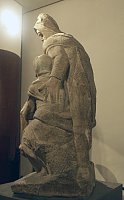
|
Self Portrait of Michelangelo in his 80sThe bearded figure, usually considered a self-portrait, is identified as either Joseph of Arimethea or Nicodmus. | ||

|

|
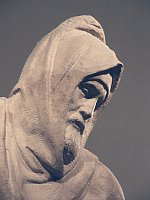
|
Mary MagdaleneThe figure of Mary Magdalene is at Christ's right, usually the place where the Virgin Mary is. The figure of Mary Magdalene was completed by Tiberio Calcagni after the work was acquired by Bandidni. The saccharine quality of this figure is alien to Michelangelo's vision. She also seems disproportionately small. | ||

|

|
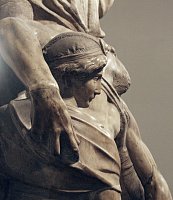
|
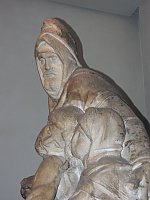
|

|
Unfinished stone carvingMichelangelo was working on this sculpture toward the end of his life, intending it as his funerary monument. The unfinished nature of the work is clearly evident in the chisel marks. |
 Click here to return to index of art historical sites.
Click here to return to index of art historical sites.
 Click here to return to index of artists and architects.
Click here to return to index of artists and architects.
 Click here to return to chronological index.
Click here to return to chronological index.
 Click here to see the home page of Bluffton University.
Click here to see the home page of Bluffton University.

